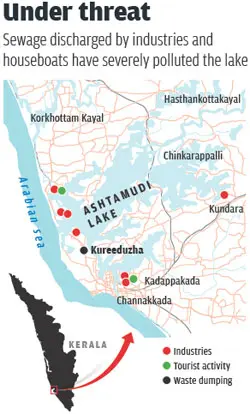Art and Culture
Rejang Dewa festival - The Hindu
Rejang Dewa festival is being celebrated in Bali, Indonesia.
Rejang Dewa Festival
- Origin: Balinese Hindu festival celebrated in temple ceremonies.
- Purpose: Honors deities descending to Earth and serves as a sacred offering.
- Rejang Dewa Dance: Performed by pre-pubescent girls symbolizing purity in which dancers wear white and yellow costumes with coconut leaf and flower headdresses. Movements are slow and circular, signifying devotion.
- Cultural Significance:
- Integral to rituals like the Ngusaba Goreng thanksgiving festival for a rich harvest.
- Part of wali dances, sacred and performed exclusively within temple grounds.
- Preservation Concerns:
- Modernization and urban migration threaten continuity.
- Emphasis on preserving cultural traditions through community involvement.

Ustad Bismillah Khan Yuva Puruskar - PIB
Union Minister of Culture and Tourism will confer the Ustad Bismillah Khan Yuva Puraskar for the years 2022 and 2023 to 82 young artists in a special ceremony.

Geography
Telangana among 17 States and UTs in ‘Core Cold Wave Zone’ - The Hindu
Days after night temperatures dipped across Telangana, a public advisory has been issued for cold wave conditions. The advisory has been issued by the National Programme on Climate Change and Human Health (NPCCHH).

World Affairs
Argentina considers Paris treaty pullout: What does that mean? - Indian Express
Argentina is considering withdrawing from the Paris Agreement, which aims to curb global greenhouse gas (GHG) emissions. Argentina’s review of the landmark climate treaty comes at a time when the world is preparing for President-elect Donald Trump to withdraw the United States from the deal for the second time.

International Criminal Court issues arrest warrants for Netanyahu, his former Defence Minister, Hamas leader Mohammed Deif - The Hindu
The International Criminal Court issued arrest warrants recently for Israeli Prime Minister Benjamin Netanyahu, his former Defence Minister and Hamas officials, accusing them of war crimes and crimes against humanity over their 13-month war in Gaza and the October 2023 attack on Israel respectively.



India to host global conference of cooperatives for the first time - The Hindu
India is all set to host the global conference of the International Cooperative Alliance (ICA) recently in Delhi. Prime Minister = will launch the ‘United Nations International Year of Cooperatives 2025’ at the conference on Monday, November 25, 2024.

Environment
Ashtamudi Lake - The Hindu
Recently, thousands of dead fish were found floating near the banks of Ashtamudi Lake. According to a report, the mass mortality event was caused by an algal bloom. The study also found the presence of streptococci and E. coli in water pointing to sewage contamination in Ashtamudi.
Algal Bloom

- Definition: Rapid increase in algae (phytoplankton) population in aquatic ecosystems which can cause visible water discoloration (green, red, brown, etc.) depending on algae type.
- Occurrence: Found in freshwater, marine, and brackish water environments.
- Causes:
- Nutrient Pollution: Excess nitrogen and phosphorus from agricultural and urban runoff promote algal growth.
- Warm Water: Higher temperatures enhance algal metabolic rates.
- Sunlight: Essential for photosynthesis, boosting algal growth.
- Stable Water Column: Stratification traps nutrients in the upper layers, fueling blooms.
- Stagnant Water: Limited water movement concentrates algae in specific areas.
- Eutrophication: Natural or human-induced nutrient enrichment.
- Agricultural Runoff: Fertilizers and pesticides contribute to nutrient loading.
- Urban Runoff: Nutrient-rich stormwater from impervious surfaces.
- Reservoirs: Trapped nutrients in dammed water bodies.
- Climate Change: Altered precipitation patterns and temperatures increase bloom frequency.
- Types of Algae in Blooms:
- Cyanobacteria (Blue-Green Algae): Produces harmful toxins like microcystins and saxitoxins.
- Dinoflagellates: Cause red tide events and produce marine toxins.
- Diatoms: Non-toxic but can cause ecological disruption.
- Golden Algae: Emerging concern in freshwater bodies with high salinity.
- Impact:
- Water Quality Degradation: Reduced clarity, undesirable colors, and odors.
- Fish Kills: Oxygen depletion during decomposition harms aquatic life.
- Toxicity: Harmful algae produce toxins dangerous to animals and humans.
- Human Health Risks: Toxins can affect recreational users, drinking water, and seafood consumers.
- Economic Losses: Adversely affects fisheries, tourism, and recreation.
- Prevention and Mitigation
- Nutrient Management
- Reduce runoff through sustainable agricultural practices (cover crops, reduced tillage, proper fertilizer use).
- Diversify crops and manage compost effectively.
- Monitoring and Detection
- Regular monitoring of algal biomass and toxin levels for early intervention.
- Water Treatment and Wetland Protection

- Use algaecides and maintain wetlands as natural water filters.
- Restore riparian zones to filter nutrients before they enter water bodies.
- Ecosystem Restoration
- Enhance biodiversity and protect natural water bodies to mitigate bloom risks.
Ashtamudi Lake
- Location: Ramsar wetland in Kollam district, Kerala known for its panoramic beauty and eight channels (Ashtamudi means "eight arms").
- Significance: Second largest lake in Kerala, connecting to the sea via the Neendakara estuary.
- Major water source: Kallada River.
- Historical Importance:
- Key port area in the 14th century, connecting ancient Quilon (Kollam) to global trade.
- Mentioned by Moroccan explorer Ibn Battuta as a significant trading hub.
- Ecological importance: Home to diverse marshy mangroves, including two endangered species:
- Syzygium travancoricum.
- Calamus rotang.
Chhattisgarh's new tiger reserve, at heart of animal's contiguous home - Indian Express
Recently, the Chhattisgarh government notified the Guru Ghasidas-Tamor Pingla in the state as India’s 56th tiger reserve. The reserve is expected to help Chhattisgarh improve its tiger population, which has been dwindling in recent years. It also opens an avenue to the state’s ambition of reintroducing cheetahs at the reserve — the last cheetah was spotted here in the 1940s.

Tiger Conservation in Chhattisgarh: Comprehensive Tiger Conservation Plan (TCP)
- Improved Infrastructure: Develop robust road and wireless connectivity for patrolling hilly terrain (50% of the reserve).
- Prey Base Enhancement:
- Development of grasslands and water bodies.
- Translocation of cheetals and wild boars from other parts of the state.
- Strengthening Wildlife Corridors:
- Focus on corridors connecting Sanjay and Bandhavgarh Tiger Reserves (MP).
- Address habitat needs like grassland, water resources, and prey base for migrating tigers.
- Mitigate human-wildlife conflict.
- Community Engagement:
- Create awareness to avoid animal-human conflict in 42 sparsely populated villages.
- Voluntary relocation options for villagers.
- Job opportunities in tourism-related activities like guiding, homestays, boating, and handicrafts.
Tungareshwar Wildlife Sanctuary - The Hindu
Authorities have told the National Green Tribunal that the claims made in a media report about wild animals disappearing from the Tungareshwar Wildlife Sanctuary in Maharashtra due to encroachments were "inaccurate" and "sensationalised."

SACON team from TN's Anaikatti discovers new frog species in Meghalaya during two-year study - Indian Express
A team of scientists from SACON (The Sálim Ali Centre for Ornithology and Natural History) in Anaikatti, has discovered a new frog species during a two-year study in Meghalaya. They have named the species as ‘Raorchestes asakgrensis’.

Raorchestes asakgrensis
- About: A newly discovered frog species named after the Eman Asakgre Community Reserve in Meghalaya's Garo Hills to honor local conservation efforts.
- Habitat: Found at an elevation of 174 meters in Eman Asakgre.
- Appearance: Small arboreal frog with a pointed snout and visible tympanum.
- Size:
- Males: 20.49 mm (snout-vent length).
- Females: 22.8 mm.
- Behavior:
- Males call from shrubs at dusk, perched 1.5 meters or higher.
- Calling activity peaks after the first monsoon rains.
India drops two places but remains among top 10 climate performers: Report - The Hindu
India ranked 10th on a list of over 60 countries assessed for efforts to fight climate change. The Climate Change Performance Index (CCPI 2025) report, released at the annual UN climate conference in Baku, leaves the first three places empty followed by Denmark (fourth place) and the Netherlands while the largest two emitters, China and the U.S., remain very low at 55th and 57th place, respectively.

Science and Technology
India’s 1st AI data bank to boost national security launched - PIB
The Ministry of Science and Technology recently launched India’s first Artificial Intelligence (AI) data bank that is aimed at propelling innovation and boosting the country’s national security.
Artificial Intelligence Data Bank
- About: Launched to foster innovation and strengthen national security.
- Role: Provides access to high-quality, diverse datasets for researchers, startups, and developers to create scalable AI solutions.
- Key Highlights:
- Introduced by the Minister of Science and Technology during the 7th ASSOCHAM AI Leadership Meet 2024.
- Enhances national security through real-time analytics of satellite, drone, and IoT data.
- Supports predictive analytics in disaster management and cyber security.
